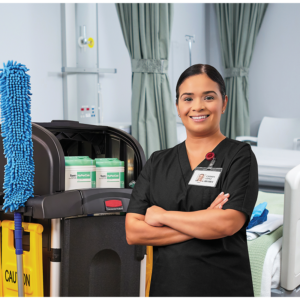Interventional Care


We notice that you are visiting us from . This site only services US-based visitors. Would you like to visit the site that is appropriate for your location?

“The very first requirement is that it should do the sick no harm.” – Florence Nightingale (1820-1910)
One may ask, what’s new regarding USP <797> Pharmaceutical Compounding – Sterile Preparations enforceable standards since the 2012 fungal meningitis outbreak1? The answer is “nothing is new,” as the proposed revisions (posted in September 2021) are still undergoing a public comment period until March 2022. All public comments must then undergo a review with a response provided by the existing Expert Compounding Committee to each public comment made.
The official standard is still the 2008 version3 developed by the Expert Sterile Compounding Committee at USP from 2005-2010, revised again during 2010-2015.
The cleaning and disinfection of the sterile compounding environment continue to have a huge emphasis on keeping microbial contamination of environmental surfaces to a minimum. The chapter is not prescriptive as to what disinfectants can be used, though it does reference organizational policies for facility disinfectants for consideration.
Healthcare organizations in the U.S. require the use of EPA-registered products. There should be no exception pertaining to the Compounding Pharmacy. This decision should be made in collaboration with the Pharmacist, Infection Preventionist, and Environmental Services Manager/Department Head.
In any case, the use of sterile 70% isopropyl alcohol wipes is recommended to remove any disinfectant chemical residue from surfaces after the proper contact time, according to the manufacturer’s instructions for use. In the current official chapter, Appendix II lists some of the commonly used disinfectants in healthcare with their respective microbial activity and properties as a guide to selection.3 Unfortunately, the table is not current with some of the newer available disinfectant formulations.
An example is a Sani-HyPerCide® disinfectant, which is a non-bleach sporicide available in a one-step cleaner/disinfectant pre-saturated wipe format. A recent study cited its advantages as a universal disinfectant that is also sporicidal with an excellent compatibility profile for hard, non-porous surfaces.4 The routine use of a sporicidal agent is a proposed requirement in the new revision of chapter <797>, Hazardous Drugs chapter <800>, and the new Radiopharmaceutical Chapter <825>, currently posted by USP as informational only.5
The frequency of cleaning and disinfection process is defined in Chapter <797> as minimum standards of compliance, and are currently stated as follows3:
All cleaning materials, such as wipes, sponges, and mops, should be non-shedding, preferably composed of synthetic microfibers, and dedicated for use in the various segregated compounding areas and should not be removed from these areas except for disposal. Floor mops may be used in multiple segregated areas of the compounding pharmacy, but only from the cleanest area (clean room) to the less clean area (anteroom). Ideally, all cleaning tools are discarded after a single use by collection in suitable plastic bags and removed with minimal agitation.
Worth noting as part of the quality checks for cleaning and disinfection compliance, the USP chapter3 utilizes several approaches to assess and evaluate the level of cleanliness of the environment:
Action Limits are defined for various areas of the compounding pharmacy, but any viable organisms recovered must be identified to at least the genus level. Even one CFU of an epidemiologically important pathogen requires immediate remediation and re-testing before compounding can proceed.
What does the future hold in the Compounding Pharmacy’s approach to cleaning and disinfection practices to maximize patient safety? The role of manual cleaning and disinfection will most likely continue to be an important component in the long term, but the additive role of no-touch technology such as UVC needs to be considered as well.
One of UVC’s unique advantages is it leaves no residue on surfaces and can be considered a thorough room disinfection strategy that requires less than one hour of downtime with no room ventilation interruptions, unlike the deployment of Vaporized Hydrogen Peroxide devices.
These UVC devices offer a sporicidal component as well. Since UVC technology is already being used in hospital settings for disinfecting rooms of patients previously on Contact Precautions as well as being deployed in the Operating Room during downtimes to augment thorough room disinfection, this may be a new area of scientific study to extend their use into the compounding pharmacy as well.6
References: